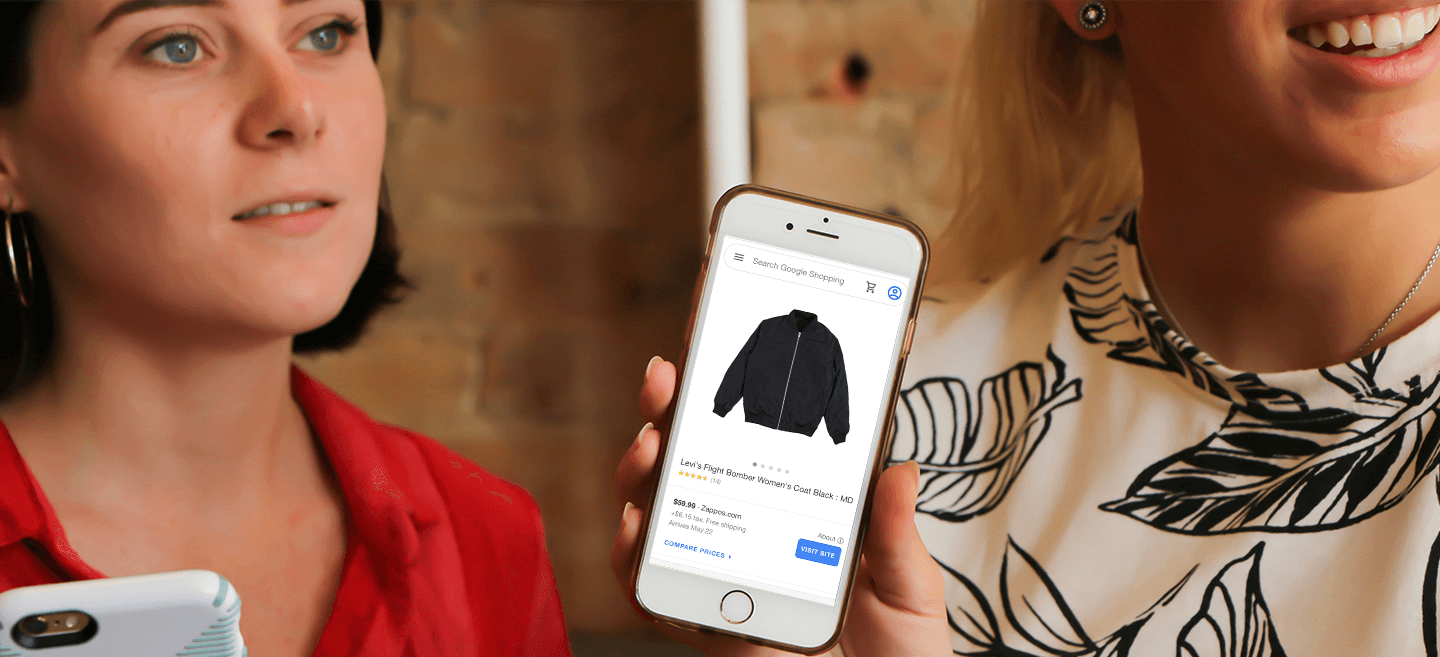
Content Marketing Tips to Help Tap into Your Audience: Part 1
Content marketing allows businesses to define their online presence and attract an audience. We received a wealth of great tips, strategies, and ideas to master the craft from content marketing experts. There’s a lot to learn, from identifying an audience and producing valuable content, to managing resources and testing what works.

Nagih Youssouf
Account Manager
Build up your website, but don’t forget social media.
Content Marketing is arguably the most important aspect of what’s called an online presence. Nearly every part of it relates to consumer behavior and involves content to read, interpret and prompt action. Whether it’s to purchase a product, cast a vote, or sign a petition, content marketing continues to make an impact on our lives every day.
There are a variety of methods to send your message to the masses. Newspapers, magazines, and other traditional marketing means have given way to things like websites, online listings, and Google Ads. Over 95% of all businesses in the U.S. have used an ecommerce website builder to showcase their company and what they offer to consumers. And because of this, Google monitors web content to see if it’s justified to place the business in its respective ranking.
One we cannot omit is Social Media and its huge influence on our mobile-obsessed population. It’s a huge platform for users to reach a diverse amount of people at once, but that depends on which one you use. Each social media company has a unique demographic to cater to, so researching and being cognizant of this can maximize your return on engagement with them.
Facebook is the second largest search engine that allows people to say whatever and however to receive a decent amount of results. LinkedIn is perfect to influence highly driven professionals to change their lives and make sound career decisions. Instagram can assort vivid images in ways that can make a mediocre restaurant become the talk of the town! Twitter and Snapchat are great for time sensitive people who want a quick, memorable laugh!
I can go on about the significance to how a group of words can resonate with an audience and promote change. Like in life, if you play your words right, you too can also win the game!

Juliann Kirkland
Founder & Digital Specialist, Caffeinated Brands
Prepare your content for voice search.
Focus more on conversational content.
Earlier this month, Google announced that Google Assistant now has 500 million people using their virtual assistant devices. This is only a small percentage of the market share when compared to Apple’s Siri and Amazon’s Alexa. And most households in the U.S. have at least one virtual assistant; many households have more.
Why does this impact your content marketing campaigns? Because people search differently when speaking to a device than they would when typing a search query into Google. When speaking to a device, people are more likely to use a conversational tone, whereas, when they are typing, they focus more on entering keywords. Think about it; when was the last time you typed an entire sentence into a search bar?
This conversational approach to search impacts your content marketing in other ways too. When you ask a virtual assistant a question, the assistant responds with only one answer, typically the top search result snippet for that specific question. In contrast, when a user types in a search query, a full page of search results appears. In the past, SEOs and content marketers were able to focus on getting first page search results and getting into the top three SERPs listings was a significant accomplishment. But now, with virtual assistants only responding with one answer – being the second or third result isn’t good enough.
So, if you want to compete for customers using virtual assistants in 2020, you need to focus on producing more conversational content, and ensuring that the content is fully optimized to best answer virtual assistants.
Be authentic and get personal with your audience.
In this competitive environment, searchers have little patience for companies that make them sift through industry jargon and use doublespeak. Be clear. Be concise. And be authentic. Let your audience get to know you—and build a personal relationship with them. They are much more likely to be loyal to your brand when they feel they have established a personal relationship with you.

Courtney Pirko
Digital Marketing Strategist, Riggs Partners
Speak to your audience about their interests, not your brand.
Content Marketing isn’t about your brand, it’s about your audience. With the technology and tools that we have at our disposal, it’s more important than ever. My biggest advice to anyone wanting to take it to the next level would be to use data to inform your creative. There are countless tools to help you learn about your audience. Find out what they are most interested in and use that to your advantage to create content that speaks to them. With so many channels out there, it’s also extremely important to make sure you create content in the right places. Just because a platform exists doesn’t necessarily mean your audience is there. Use data to inform all of your decision-making.
Once you know where you should be and what you should be talking about, it’s time to focus on providing a good experience for your audience. Create content that is visually stimulating, quick to load, interesting to read, etc. When it comes to writing, always read your content out loud before publishing, use SEO best practices and ask yourself, “Will my target audience enjoy this or find it helpful?”

Karla Tobin
Senior Digital Marketing Manager, Meridian Knowledge Solutions
Everything piece of content you make should serve a purpose.
Have a solid content strategy. Address all stages of your funnel with the target audience in mind. Each content should have a hierarchy of directing the audience further down your marketing/sales funnel, intended to help guide them to the next step. A smart boss once told me, each page on your site and each piece of content you make has a job or purpose. Start with your goal in mind. What is the purpose or intent of this content? Is it brand awareness, brand distinction or more leads? For example, top of funnel should be aimed towards brand awareness and answers the who, what and why of your brand existence. I have found lower barrier to entry type content has worked best, such as non-gated infographics.
Make your writing style conversational and informational. Speak to your intended audience. Content should be authentic. You don’t have to pay to get quality content. Utilize the expertise of those experts you have access to. They are currently experiencing those intimate conversations and questions customers are asking. They will be your best resource to uncovering the answers and solutions to your customers’ problems. You can also do some good old-fashioned research. As you do your research, table some of that research to explore at later times to utilize for future content.
Optimize, measure, repeat. Content should be optimized with SEO strategies such as keywords and supporting subject context. Link to other existing content to keep the conversation going, ideally giving deeper context to the conversation. Measure effectiveness of your content for each funnel stage. What grabbed most exposure? What gave more leads? What led to more clicks? Ensure your CTAs are in place, don’t forget to tell them what the next step is.
Whatever you do, it’s better to get content out than sit and wait for weeks and months to go by. That leads to stagnation, and inability to measure the effectiveness of your content as you lose momentum.

Lana Hodgkinson
Content Account Manager, Croud
Undertake a large project with the intent of making a splash online.
- Before moving forward with any strategy, creation or planning, understand fully what your brand positioning is, how you want to communicate to your audience and via what platforms. Having a tone of voice guide is the first step and will make everything run a lot smoother in the long run.
- When working with an agency, make sure that you outline the statement of work for every project in order to manage expectations and standardise feedback rounds. Ensuring you’re on the same page as your client or agency can make conversations a lot easier later on.
- If you’re thinking about creating content, remember that in order for any amplification to work, there needs to be content on your site. It can be tempting to jump the gun with imagery and copy for social media profiles, but content is needed to lead followers back. If conversions and site traffic are the goal, it might be better to start with a blog filled with call-to-actions and build out from there by sharing those blog articles through social media and other PR initiatives.
- Don’t forget the value of hero content. Whether it’s because of the larger investment or intimidating workload, these larger pieces of video or interactive on-site content can often be overlooked. Hero content targets the awareness level of your customers and aims to make a splash in the online sphere. Intended to go viral, they can bring a mass audience to your door and pay off in the long run.
- Consider video in your strategy. Video is the way forward, be it short snippets for your socials, informative videos explaining your product offering or featured videos interviewing your higher-ups. Video is easy to consume, easy to share, and easy to remember and the first step is a video content strategy.

Turner Sato
Director of Marketing, NurseGrid
You can keep building off a single piece of content to create new content.
As a one-man show with a limited budget, I was motivated to design a process for assembling content that was fast and free. What developed was a method for creating multi-medium, SEO-friendly, evergreen content campaigns from existing resources.
Start with at least 1000 words of original writing on the topic. This can range from a stream of consciousness rant by your resident thought leader to a collection of existing blogs. Work it into a clear, linear narrative that articulates a single pain point and solution. Fill in the gaps with creativity and research. Diversify sections with bullet points, block quotes, and statistics. Use the final work to create a pillar page. Link to it in the main navigation as a resource in alignment with the company’s mission or value prop.
Next, create a list of content needs based on mediums, including the blog, social media, and emails. Use this as a guide to pull sections of copy out that will be used as introductions to the greater text. They should be brief, informative, and compelling. Every medium and platform should have unique content styled to its audience and funnel position.
Rephrase blogs to avoid duplicate content, and link back to the pillar page in every blog that references this topic. Schedule social posts for the page, blog, and platform-specific content throughout the year. In emails and newsletters, treat the title as a lede and follow it with a gripping stat or quote.
This method helped me tackle core elements of content marketing with moderate lift at zero cost. My pillar pages serve as bottomless wells of potential. Most importantly, it’s adaptable. I recently used this technique to create the downloadable guide featured in a user engagement program. My only limitation now is my imagination.

Lindsay Southwick
Digital Marketing Manager, Midaxo
If something is working, you don’t need to tweak it.
Quality Content Matters
Yes, it is 2020, and by now this has the same novelty as the proverbial “dog bites man” headline. It’s worth reiterating because there are still plenty of organizations that don’t invest in great content despite it playing a pivotal role in their content marketing programs. For content marketing to succeed, you need quality content.
I Just Want It to be Perfect
Marketers can spend all day (and all night) debating how to create an ideal content experience for prospects. While the details (How long is it? How do we format it? etc.) certainly matter, it’s worth remembering that prospects rarely look at marketing materials so studiously. Use what puts your best foot forward.
Make the Most of Social
Paid search marketers like to mention that leads from keyword search typically have more buying intent than leads from social. In fact, they often mention this over and over again, even after you beg them to shut up. Paid search is a great avenue for content marketing. For those who have the executional chops, so is paid social, particularly LinkedIn for B2B prospects.
What’s Old Can Be New Again
There’s a prevailing attitude among marketers that content and ads must be consistently refreshed to avoid becoming “stale” over time. If campaign performance drops, then yes, make tweaks. There are other times, however, where the same piece of content backed by the same ads can produce strong results for months or even years. If it ain’t broke, don’t fix it.
Don’t be Afraid of the Dark
Marketing in general, and digital marketing specifically, is more measurable than ever before. And yet, as many businesses can tell you, truly insightful marketing attribution is still devilishly tricky. Be data-driven; find the right numbers and focus on them. Also get comfortable with the fact that, thanks to impressions and dark social, some aspects of marketing still can’t be quantified.
Related Content

eCommerce Marketing Tips to Drive More Online Sales

Tips to Help Improve Your Social Media Ad Campaigns
